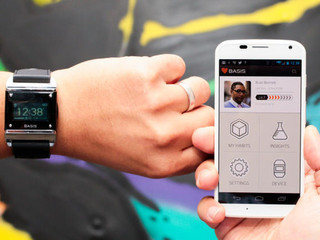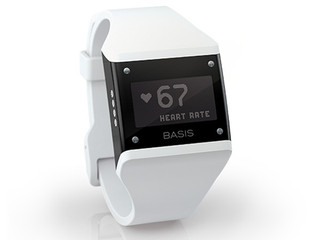How does Ginkgo Bioworks make money?
Ginkgo makes the majority of its money from the sale of its end-to-end COVID-19 testing services
Read more...
The Basis health tracker is considered one of the most accurate bands on the market today. Reviews of all of the health trackers on the market consistently peg Basis as the winner, which may be why Intel took such a shine to the company. Basis was acquired by Intel last month for an undisclosed amount, which reportedly landed somewhere in the range of $100 million.
So how does Basis make money?
The company has a pretty standard retail model. The actual trackers sell for $199 each and the Basis store offers a range of accessories, like fancy straps and USB connectors.
The company hasn’t released sales figures, so it’s not clear how much Basis generates in revenue, but we do know a few things about the wearables market and Basis’ place on the totem pole.
Over the next few years, the wearables market is expected to explode (ESPLODE I SAY!), driven largely by sales of health and fitness trackers. A 2012 report from Juniper Research predicts that in 2014, wearables will be a $1.5 billion market, up from $800 million in 2012. By 2018, sales of health-related wearables will reach $6 billion, according to ABI Research. ABI’s report notes that currently, heart rate monitors are the driving force among health wearables, but the research firm predicts that activity trackers will grow at a compound annual growth rate of 40% and will eventually eclipse heart rate monitors.
“Fitness activity trackers are quickly gaining popularity in the market. Different from other more single-use or event-centric devices, activity trackers monitor multiple characteristics of the human body including movement, calories burned, body temperature, and sleep tracking,” said ABI Senior Analyst Adarsh Krishnan, in a statement.
An earlier report from IMS Research estimated that by 2016, the “minimum revenue opportunity” for wearable devices would be $6 billion.
Many agree that 2014 will be the Year of the Wearable. Canalys estimates that 17 million wearables will be shipped this year, some nine million of which will be “basic bands” or health trackers. By 2017, Canalys anticipates that 45 million smartwatches will be shipped altogether, and that by that point, smartwatches will absorb health trackers.
Canalys researchers also broke down the fitness tracker market and revealed that despite being regarded as one of the most accurate trackers, Basis barely makes a dent in the market. Fitbit dominates the basic band category with 58% of the market, followed by Jawbone UP, which accounts for 21% of the market. Basis finds itself in the “other” category, which represents just 11% of the health tracker market.
Basis’ sensors are considered some of the most advanced in the industry. For example, the band measures sleeping and waking periods using a light sensor to measure blood flow.
To really gain an insight into Basis’ revenue and profits, we’d need to know what the cost of manufacturing is, but that remains another mystery. What we do know is 1) batteries will be approximately 2.2 times more powerful in 2020 than they are today, which will do a lot for health trackers, 2) the cost of production will likely drop over the next few years as wearables become more ubiquitous, and 3) an Apple iWatch is quite likely on the way, and that will crush all of the health trackers that have gotten by as simple pedometers.
Ginkgo makes the majority of its money from the sale of its end-to-end COVID-19 testing services
Read more...GE Healthcare, which went public after spinning-off, makes most of its revenue from imaging products
Read more...The company makes most of its money through the sale of its Health Monitoring System
Read more...

